Milkweed aphid predator farming concept
Gardening is about balance between the plants you want and the undesirable weeds and pests that you don’t. Here in the Las Vegas valley, a garden full of pretty green things is so far away from the natural state that it can be hard to find that balance. You plant a bunch of stuff that looks great in the spring but then quickly gets discovered by hungry insects, which multiply and overwhelm the plants during the difficult summer. (Example: grapes and leafhoppers.) Spraying pesticides can be a solution if you notice in time, but that keeps the garden out of balance, so you have to keep spraying over and over to keep it under control.
In a natural environment, pests are eventually limited by the growth of natural predators. So I’d like more predators in the garden, but how do I encourage that without all my plants constantly being infested by pests?
One possible approach comes from milkweed (Asclepias) and the oleander aphid (Aphis nerii):
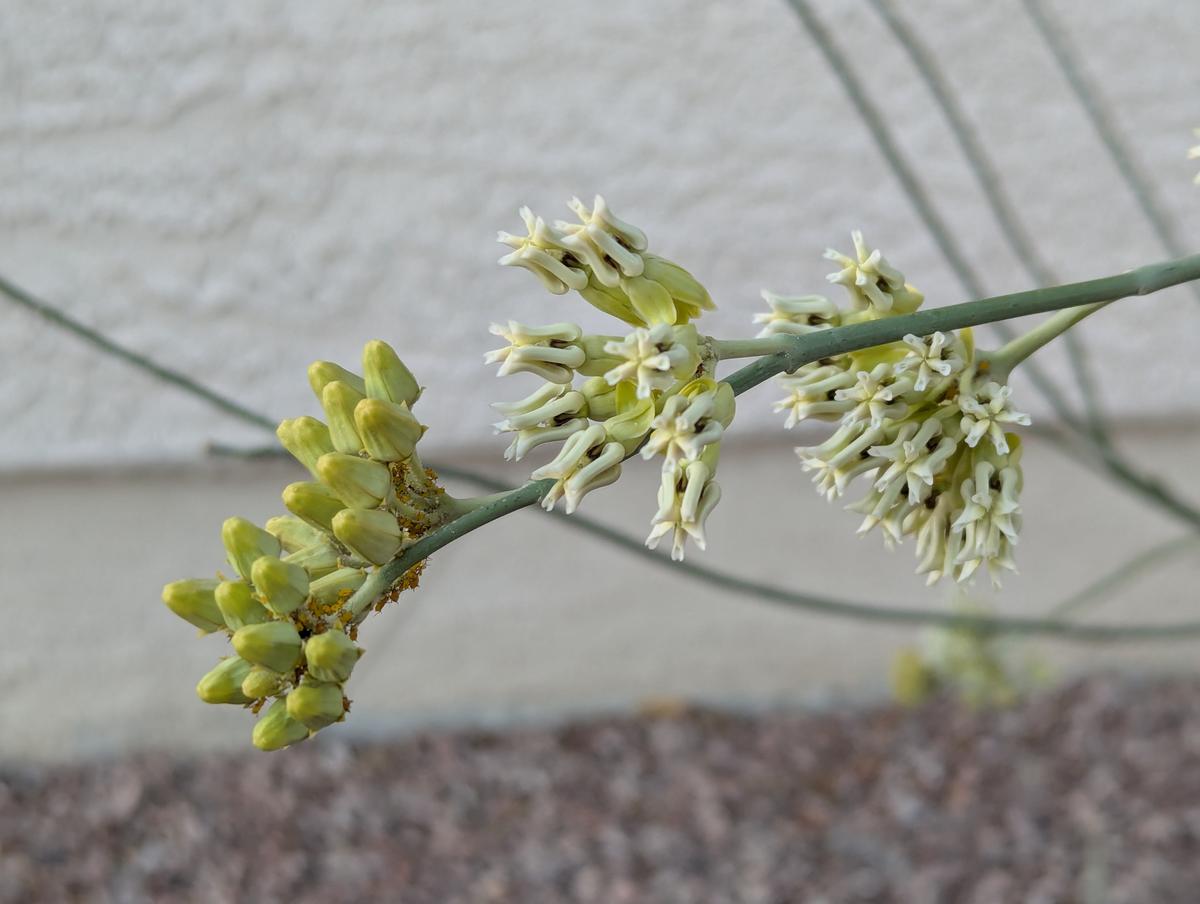
The oleander aphid is a bright yellow aphid that feeds primarily on the abundant latex sap of milkweed and related plants such as oleander. I grow several kinds of milkweed in my garden and every plant seems to get absolutely covered with oleander aphids within a few weeks of sprouting.
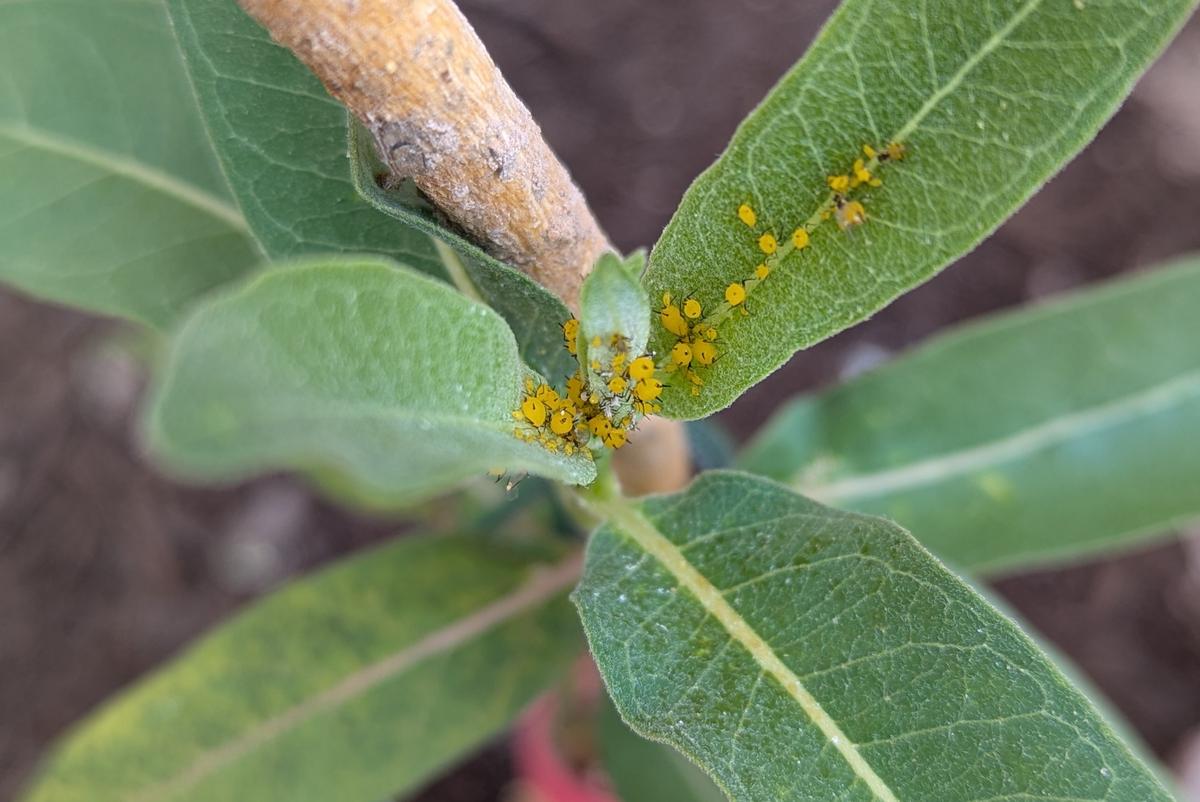
While most of the aphids are flightless, a few of them grow wings, enabling them to spread over long distances. With so much oleander growing all over the valley, these aphids are unavoidable.
Oleander aphids can stunt the growth of milkweed, but they will not usually kill it completely, and these aphids don’t seem to be interested in other plants in my garden. Over the years I’ve also noticed a variety of predator insects that feed on oleander aphids, which suggested an idea to me: use milkweed around other plants to farm large quantities of aphids and encourage the growth of predators.
I like this idea and am working on building up my milkweed crop but so far don’t have enough yet to make much of a difference. For now, here’s a collection of some of the fun predators I’ve seen on the plants.
Ladybug
Ladybugs (Coccinellidae) are not “true bugs” but are well-known aphid eaters in both their larval and adult forms. These were not common when at first, and I introduced them intentionally several times by purchasing a pack from the garden store. Now they seem to have become established and come back every year.
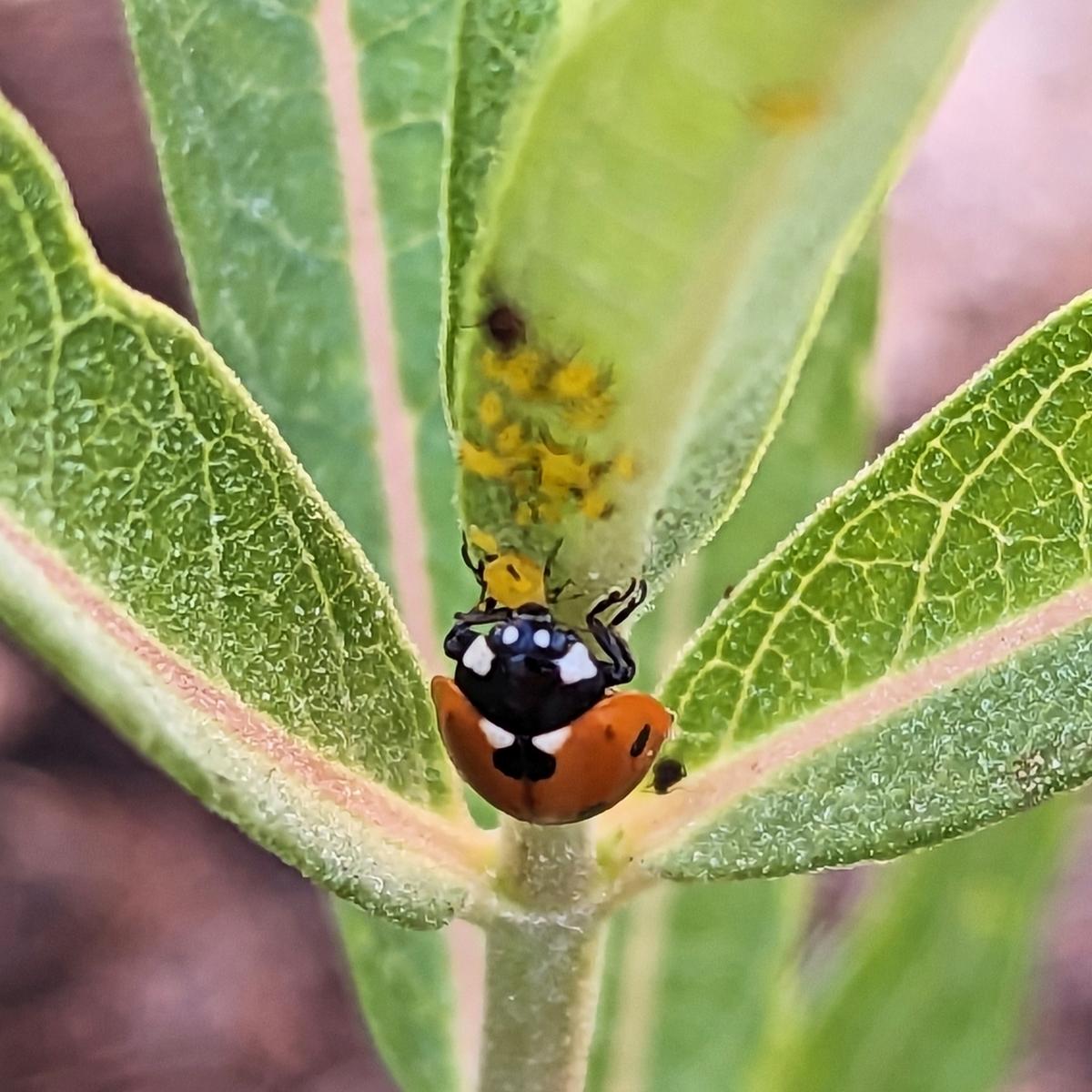
I have not seen ladybug larvae on milkweed yet.
Assassin bug
The assassin bugs (Reduviidae) are a large family of bugs with piercing mouthparts that in many species are used for hunting. These are “true bugs” with immature nymph forms that look and behave similarly. I found this adult on my milkweed:
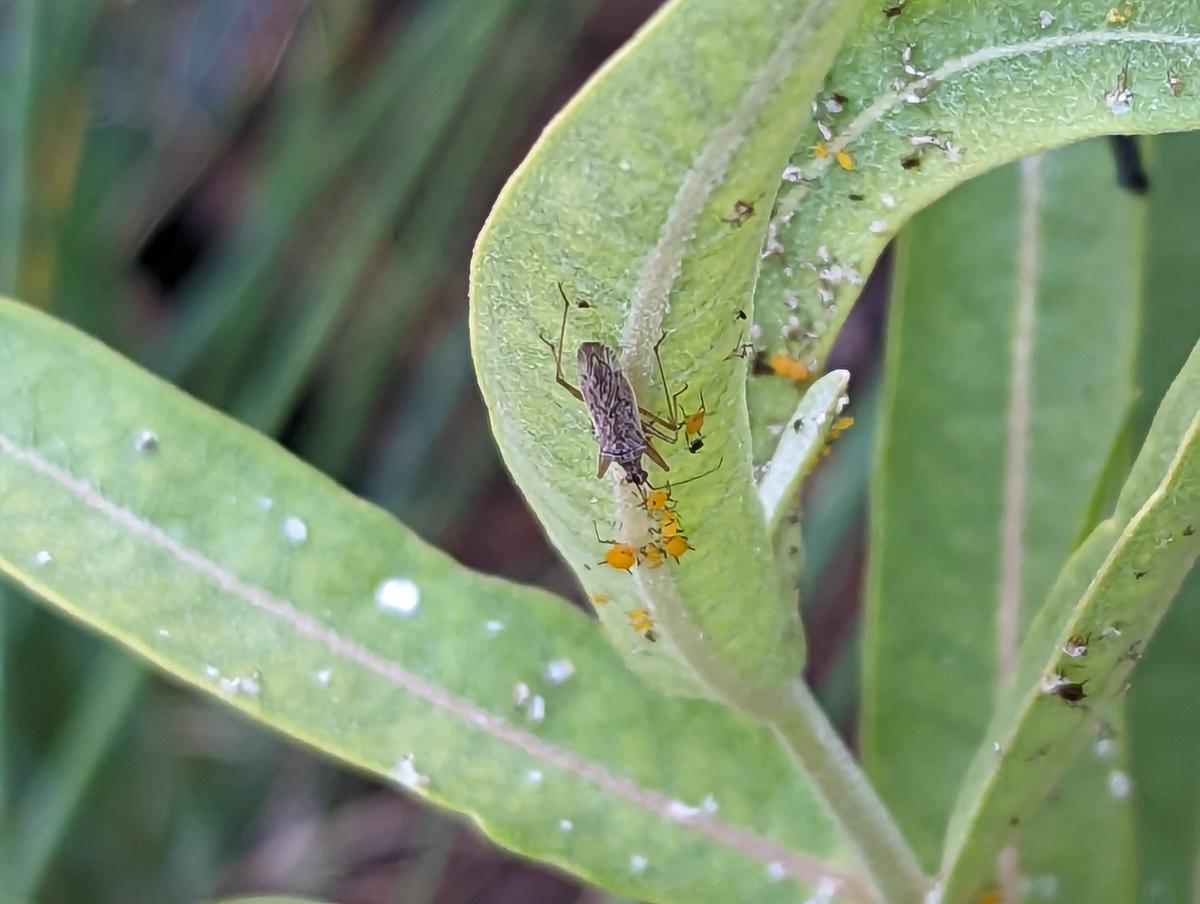
Hoverfly larva
The syrphid fly or hoverfly is a bee mimic that hovers in place while looking for a good spot to land. If it has eggs to lay, that good spot would be near a source of aphids, since its larval form is a voracious predator:
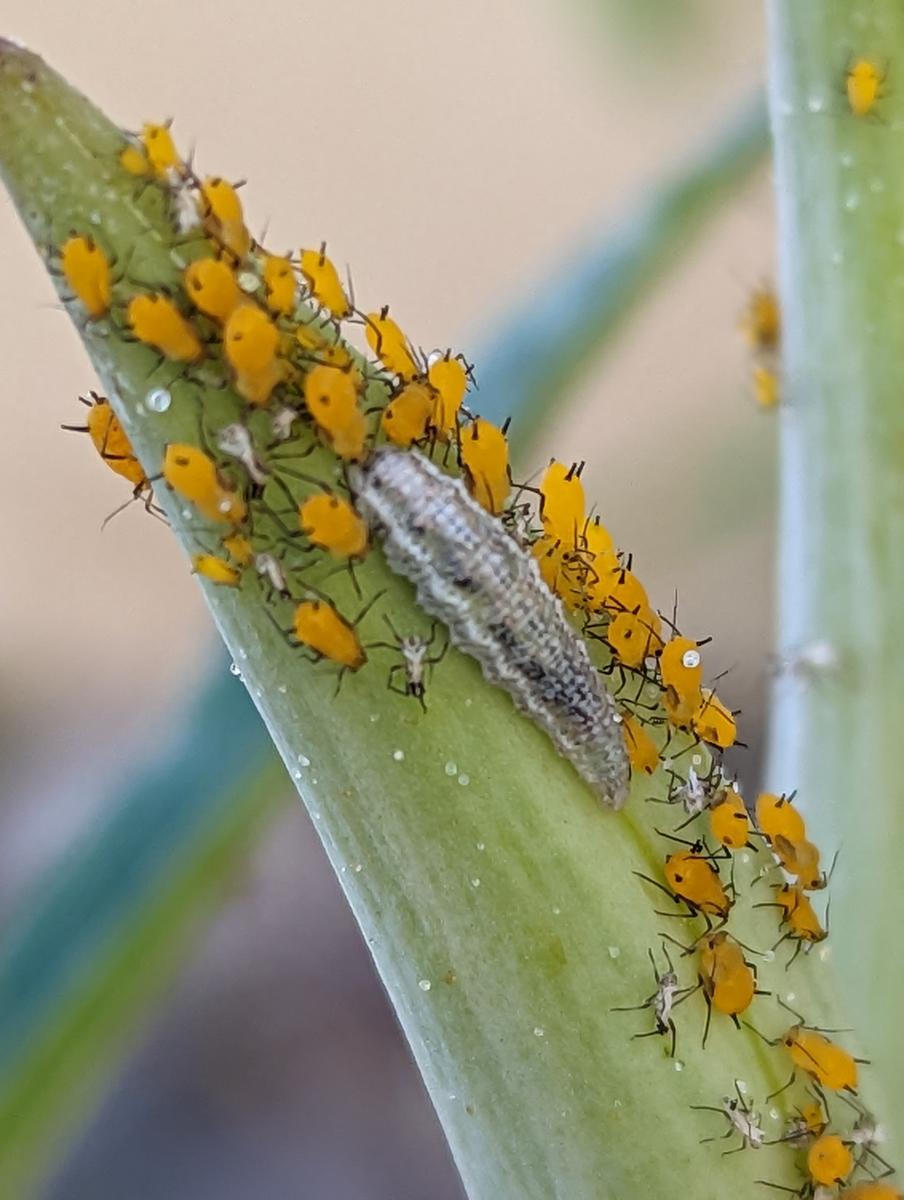
The larva looks kind of like a blob of mucus; I didn’t realize what it was at first.
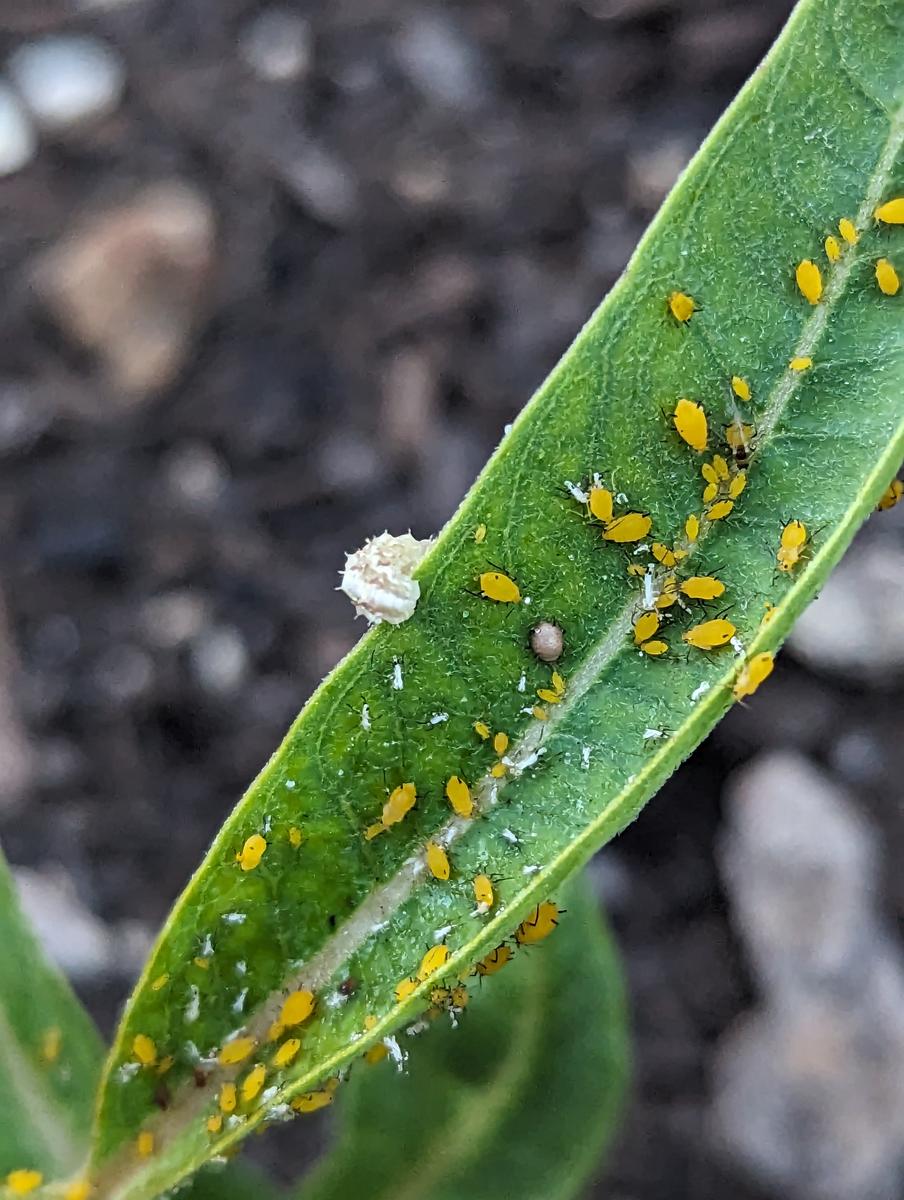
In this last picture, note that one of the aphids is inflated and brown. That brings us to the next topic:
Parasitic wasps (Aphidius)
One of the most effective factors limiting aphid populations seems to be infection by parasitic wasps. These tiny wasps lay their eggs in the bodies of the aphids, which then become inflated and hard brown “aphid zombies”. Eventually the new adult wasps emerge from a hole on the body. You can see several stages (aphid, zombie, and zombie with exit hole) on this showy milkweed leaf:

The wasps themselves are hard to find in the wild since they are so tiny and probably only stay around for a few days to mate and lay their eggs. So, I collected a few aphid zombies in a small glass vial and waited. After a week or so I found these wasps in the vial:
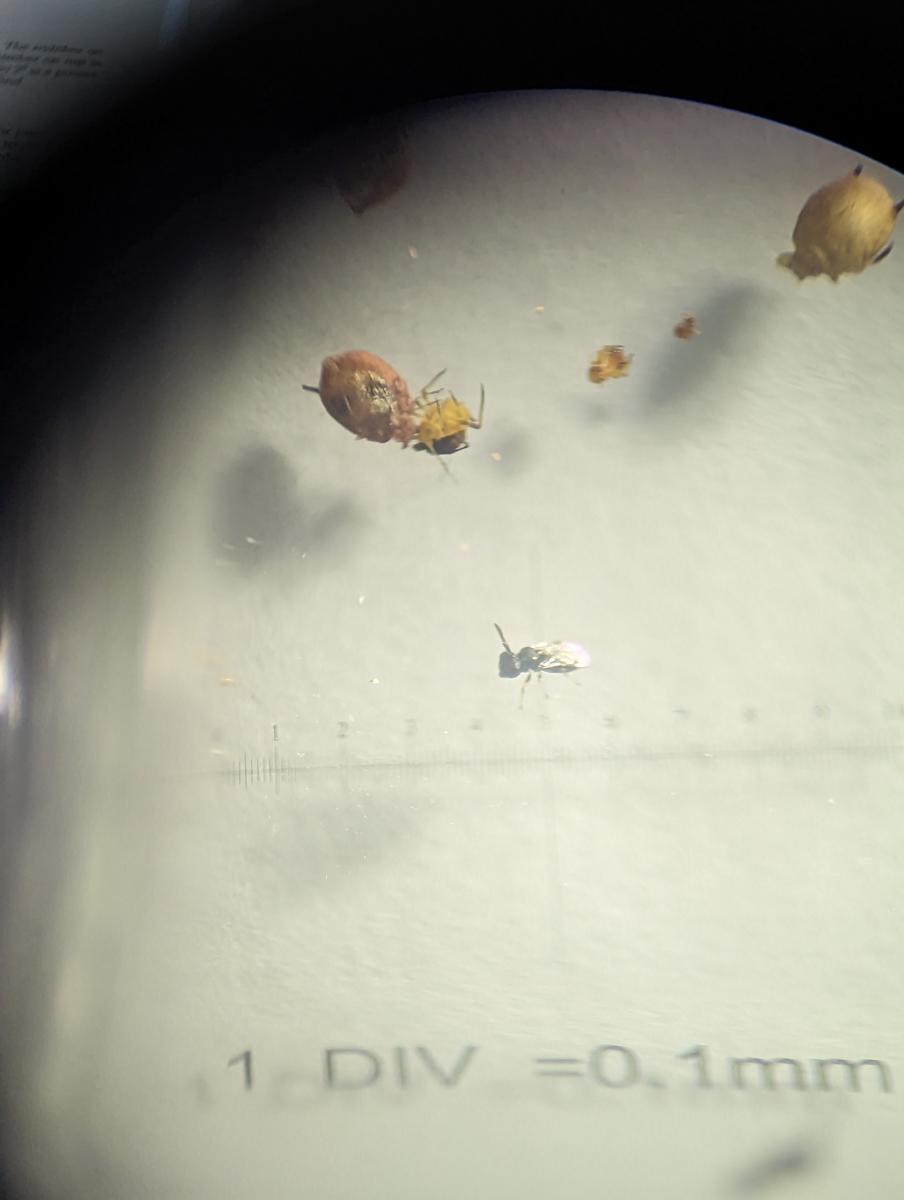
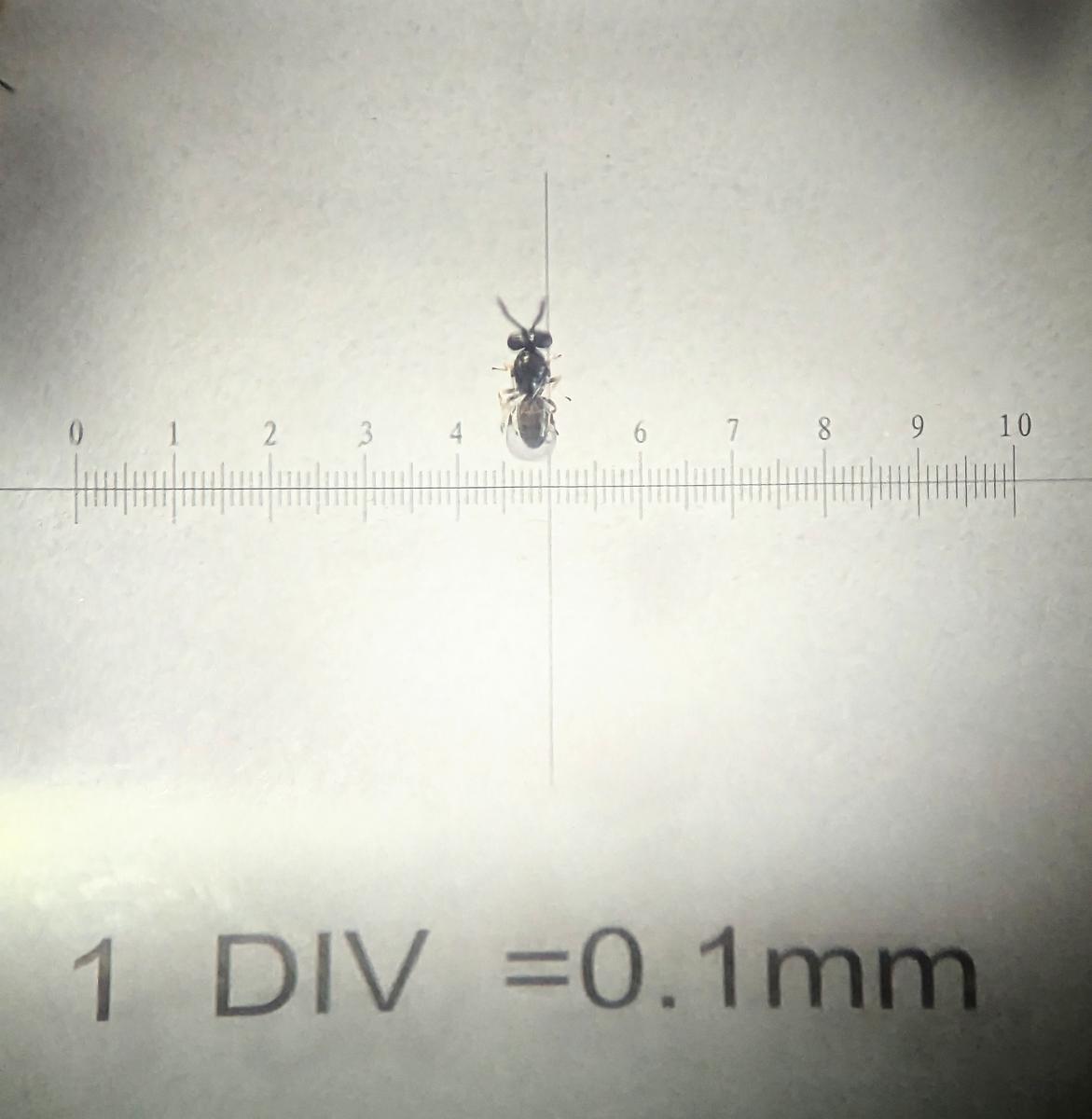
Tarantula hawk wasp
This one does not eat aphids and so is not really part of my system, but I wanted to include it since it’s a real apex predator!
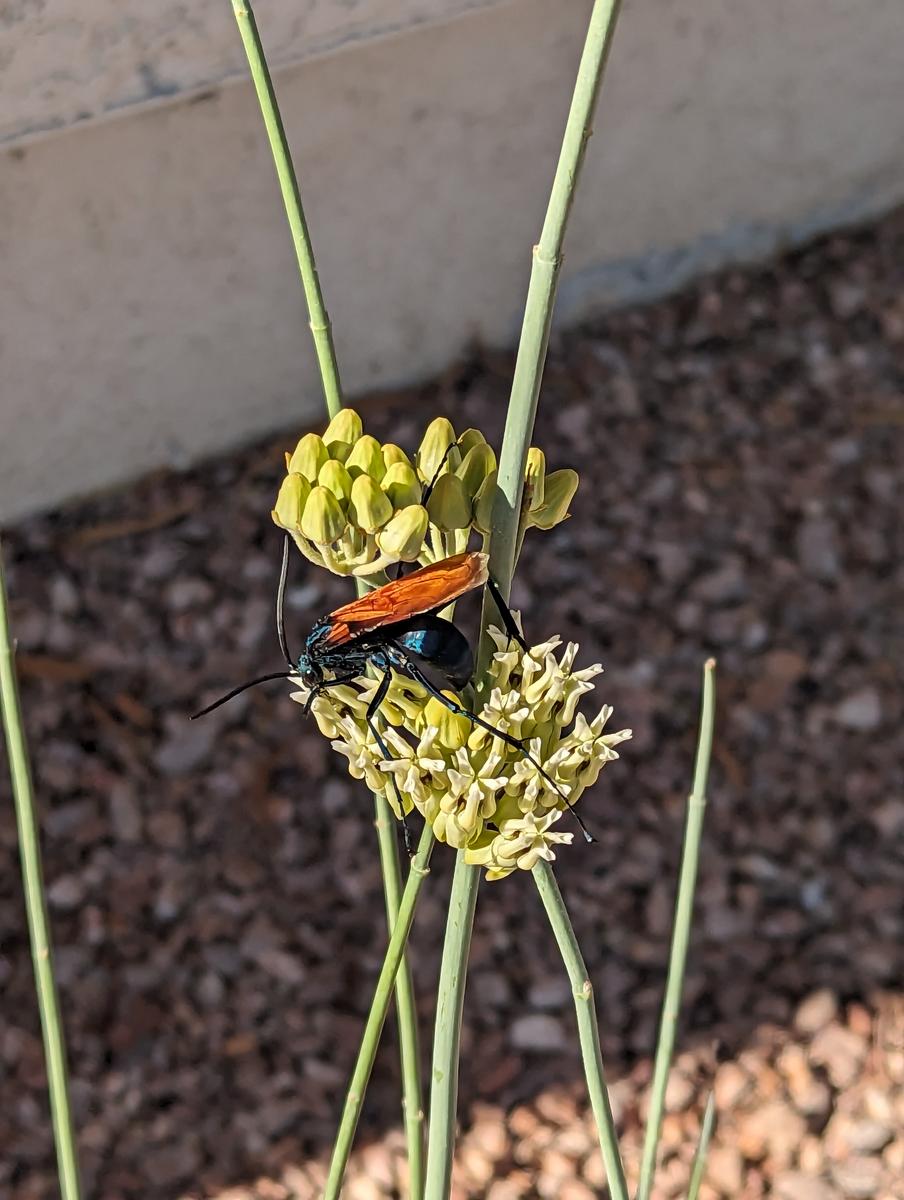
The Tarantula hawk is a huge wasp that paralyzes tarantulas and drags them into a burrow as food for its young. It is known for having one of the most painful stings in the world and also happens to love feeding on desert milkweed. I’m not sure that this particular predator is useful for the rest of my garden, but it’s pretty cool to see.